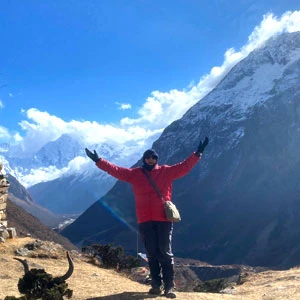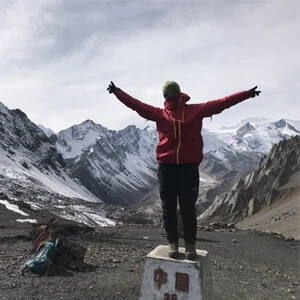Short Manaslu Circuit Trek
Embarking on the Short Trek to Manaslu Circuit is like stepping into a living postcard, where every village you pass through tells its own unique story. This particular trek begins with a private jeep or bus ride from the bustling streets of Kathmandu, winding down to the serene riverside village of Machha Khola.
Your gateway of the trek, Machha Khola is a lush, forested hillside village near the banks of the Budhi Gandaki River which presents a harmonious blend of Buddhist and Hindu traditions. As you step into this village, you will get an interesting sight of vibrant rice terraces stretching out before you. The local settlement here celebrates every major festival, such as Dashain, Tihar, Lhosar, and others.
Leaving Machha Khola, the trail becomes a blend of up-and-down paths. During this portion of this trek before reaching Jagat, you will cross multiple suspension bridges and then, navigate the stony stairs to reach Thulo Dhunga and then Jagat. For those unknown, Jagat is the starting point of the Manaslu Conservation Area and that ends up to Annapurna Conservation Area, in Manang. Well, the inhabitants of this village are generally Gurung and minority groups of Chhetri people who welcome every trekker with a warm and genuine smile and hospitality. As you wander through the village, surrounded by dense oak and rhododendron forests, you are likely to see locals in traditional attire going about their day.
Beyond Jagat, the trail winds through beautiful pine forests and grassy stretches on the way to Deng. Initially, the trail is quite easy, gently guiding you to Philim and grassy expanses in Ekle Bhatti. Here, Deng is a small village where Buddhist culture thrives. Along the path, you will witness multiple stupas, chortens, and mani walls decorated with intricate paintings, each one a testament to the villagers' unwavering faith. While in Deng, do not forget to enjoy the fresh mountain breeze in the dense bamboo forests.
Also, along the trails from Deng to Namrung, you will find a dense forest of oak and rhododendron trees. Especially if you are trekking during Spring, the hills come alive with the vibrant blooms of rhododendrons that paint it all in the colors of red, pink, and white.
Continuing the Manaslu Short Trek, you arrive at Namrung which is the heart of the Manaslu region as well as the last stop before entering the Nubri Valley. As you reach this village, you will find it bustling with Gurung and Bhotia people. Alongside the breathtaking views of the Siring Himal and Ganesh Himal, Namrung’s natural beauty is complemented by sightings of Himalayan langur monkeys and the occasional marmot. Additionally, if you are into an extra adventure, you can also enjoy horse riding.
As you approach Lho Village during this section of the trek, the awe-inspiring panorama of Mt. Manaslu, Naike Peak, and Kutang Himal unfolds, creating a majestic backdrop. The journey to Lho is graced with lush forests and quaint villages, while the towering peaks inspire a sense of wonder. In Lho, the Ribung Gompa stands as a serene spiritual center, offering captivating views of the Manaslu massif before you proceed to the picturesque Shyala Village. Well, the Ribung Gompa is a spiritual sanctuary where locals celebrate the Tibetan New Year, Saga Dawa in May, and Dumje in July.
Now, Shyala presents a stark contrast with its rugged, alpine pastures and jagged mountain beauty. This village is home to people who depend on yak and mountain goat rearing. Here, it offers the true and wild beauty of the Himalayan landscape.
Moving on, your next stop, Samagaun is home to ethnic Nubri people and a special place for acclimatization. While here, you will be surrounded by ancient stone houses, Buddhist prayer wheels, and rich cultural traditions. Furthermore, this village is a spiritual center where the serene Pungen Gompa stands as a beacon of meditation and reflection. During your trek, you will always be surrounded by the soothing scent of incense sticks and rhythmic chants of the monks.
Finally, you will reach the Manaslu Base Camp. Standing at an altitude of 4,980 meters, it offers unparalleled views of the Manaslu Glacier and the surrounding peaks. On the same day, you will descend to Samagaun and then to Samdo. Samdo is heavily influenced by Tibetan Buddhism and as you interact with the locals, you will find the Bhotia dialect filling the air.
In addition to it, you will be able to catch a glimpse or two of local people going on with their simple lives. Lastly, the final stretch of the trek takes you through Dharamshala and Bhimthang, each village adding its own unique flavor to your journey. In between Dharamshala and Bhimtang, you will also cross the highest point of the trek which is the Larkya La Pass. However, before you reach Larkya La Top, you will get to experience stunning Himalayan surroundings, with breathtaking views of snow-capped peaks, serene glacial lakes, and the thrilling experience of walking over rugged moraine. Well, this trail is adorned with a fluttering prayer flag. After the challenging descent, Bhimthang greets trekkers with its cozy tea houses, hot showers, and even Wi-Fi, ensuring well-earned comfort amidst awe-inspiring Himalayan beauty.
Following it, your final stop is Dharapani, which is also a part of the Annapurna Circuit Trek. While you spend time in this place, you can get majestic views of the vultures soaring in the sky. Furthermore, this is one of the most impressive sections of the trek as the trail winds through vibrant rhododendrons and pine forests. The colorful blooms and towering trees create a stunning contrast against the majestic backdrop of the Himalayas. This serene and scenic stretch perfectly captures the trek's natural charm and beauty.
Altogether, each village along the way offers a unique glimpse into the lives of the resilient and welcoming communities that call the Himalayas home. From the lush rice terraces of Machha Khola to the spiritual sanctuaries of Samagaun, every step of the trek is filled with discovery and awe.
Likewise, if you have enough holidays and prefer spending more time for beautiful side trips and balancing itineraries, go on our outstanding 17-day Manaslu Circuit Trek package.
Short Manaslu Circuit Trekking Difficulty
This Short Manaslu Trek is often considered a moderate to challenging trek, which makes it a perfect choice for trekkers looking for an adventure with a bit more of a test. If you have prior trekking experience, a standard level of fitness, and are completely prepared for the challenging terrain, you will find this journey incredibly rewarding. So, how far would you go to push yourself physically to enjoy the raw and wild beauty of the Himalayas?
Also, this particular trek takes you to a maximum altitude level of 5,106 meters / 16,751 feet at Larkya La Pass. Additionally, you will spend most of your days above 2,000 meters, where altitude sickness is a major problem if you do not acclimate properly. Therefore, to adapt to such thin air conditions, you will need to listen to your body and rest, especially around areas like Samagaun.
On top of altitude, the Short Manaslu Circuit Trekking Trails also include steep ascents, rugged paths, and rocky terrain, all of which can be demanding on your legs and stamina. You will be navigating through diverse landscapes such as alpine forests, riverbeds, and high-altitude meadows, all of which will keep you on your toes.
Moving on, during this journey, you will spend 6 to 7 hours every day on the trail which may even be longer on certain days. Especially while you cross the Larkya La Pass, the journey can be extra tiring due to which you will require built-in rest days for acclimatization. However, all these long trekking days offer you a sense of accomplishment once you complete it.
Now, if you have ample time in Nepal and would like to spend more time on the Himalayas, you must incorporate extra acclimatization days into the itinerary. Adding an additional rest day at Samdo allows trekkers to explore Tibet border and enjoy majestic mountain views, providing an opportunity for gradual altitude adjustment. Similarly, extending the acclimatization day in Samagaun to explore the Pungen Gompa and surrounding trails thoroughly enriches the cultural and scenic aspects of the journey, while also preparing the body for the higher altitudes ahead.
All these extra days on your schedule not only lets you spend higher time in the Himalayas but also prepare for reviving your energy. Additionally, it also allows for a deeper connection with the local culture, offering time to interact with the residents of charming villages like Lho and Samagaun.
So, while the Short Manaslu Circuit Trek offers a great challenge for trekkers, it is a trek that’s totally doable with preparation and the right mindset.
Best Time for the Manaslu Circuit Short Trek
While the Compact Manaslu Circuit Trek is a spectacular journey through diverse landscapes, the time of year you choose to embark on the adventure can significantly shape your experience. Typically, Spring (March to May) and Autumn (September to November) are the best time to embark on this trek due to their stable weather conditions, dry trails, and spectacular visibility.
Spring Season ranging from March to May brings moderate temperatures and spectacular visibility of the towering peaks, including Manaslu, Himalchuli, and Ganesh Himal. On top of it, the lower sections of this region is filled with lush greenery as well as the vibrant hues of the rhododendron blooms that paint the hill in red, pink, and white.
Additionally, it is also a great time to spot wildlife like red pandas and langur monkeys. In fact, if you plan your trek at the right season, you might even catch glimpses of local Tibetan Buddhist festivals like Saga Dawa in May, celebrated with prayers and rituals in villages like Shyala and Samagaun.
Likewise, Autumn is another prime season with the perfect blend of ideal weather and spectacular views. The temperature is also manageable with a cool breeze in the air, providing crisp visibility of the snow-capped peaks. Also, fauna is active, with sightings of animals like Himalayan marmots and wild yaks. This season also many of the local festivals, like Tiji (in Samdo) and Mani Rimdu (in Shyala) are celebrated.
Apart from these peak seasons, you can also trek during the off-season though Nepal Trekking Experts do not recommend it unless you are a seasoned trekker with years of experience. During Winter Season (December to November), the trek gets magical and yet challenging as the temperature drops below freezing.
Snow is common in the higher sections of the trail, and Larkya La Pass can be particularly challenging due to the icy conditions. Additionally, the heavy snowfall blocks the higher sections which may end your trek sooner than you might have expected.
On a similar note, the Monsoon Season (June to August) is yet another challenging time due to constant rain and thunderstorms, especially at lower sections. On top of making the trail slippery and muddy, the rainfall also brings the potential risk of landslide and flood. At this time, the forests are lush and green but you will have little to no visibility.
Short Manaslu Circuit Trekking Permits and Cost:
Before setting off on the Short Manaslu Circuit Trek, one of the key steps is ensuring you have all the necessary permits to explore this restricted region. To ensure a smooth journey, you will need three major permits: Manaslu Restricted Area Permit (MRAP), Manaslu Conservation Area Project (MCAP), and Annapurna Conservation Area Project (ACAP).
Here, MRAP is essential for trekking between Jagat and Bhimthang, and you can obtain it from the Nepal Immigration offices in Kathmandu or Pokhara with the help of local authorized trekking agencies only. For those trekking from September to November, considered peak season, the MRAP costs USD 100 for the first seven days, with an additional USD 15 for each day thereafter. If you are planning to trek from December to August, the permit fee drops to USD 75 for the first seven days and USD 10 for each extra day.
Besides, both the MCAP and ACAP will cost NRs 3,000 which covers the conservation areas. Well, you can get these from the Nepal Tourism Board in Kathmandu. Together, these permits ensure that the Rapid Manaslu Circuit Trek remains a sustainable and cherished experience for all. To obtain these, you will need a valid passport with a visa and passport-size pictures of yours.
Booking And Payment With Nepal Trekking Experts
To book your trek with us, you have to send a deposit of 10% of the total cost of the trek. Please also forward a copy of your passport, a passport-sized photo, and full flight details if and when available. For your convenience, you may also forward the deposit to us online through our website. It is completely safe, and as soon as you make it, you will get an automatic receipt in your inbox. The rest of the payment can be paid upon arrival.
Likewise, if you want a longer serene and scenic Himalayan adventure, you should consider combining the Tsum Valley Trek as well.
If you have any questions, do not hesitate to contact us anytime. We are always ready to assist.



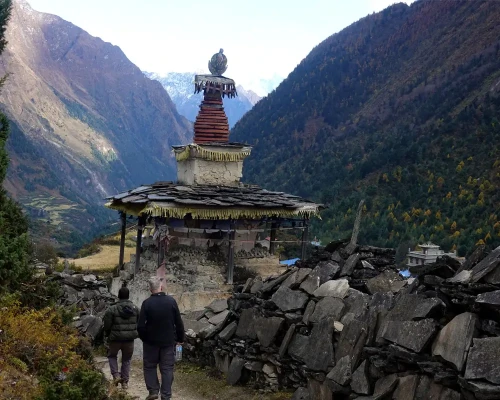
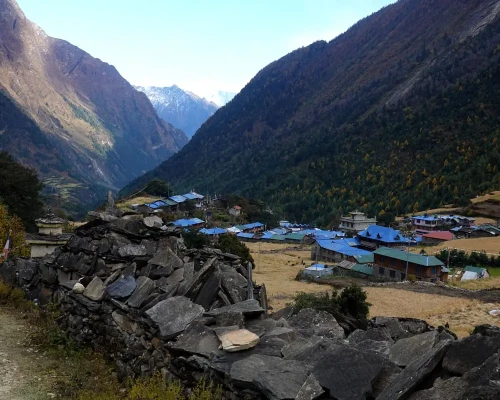

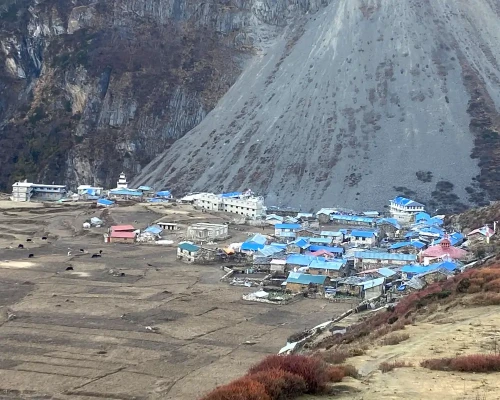

 based on 83 reviews
based on 83 reviews





